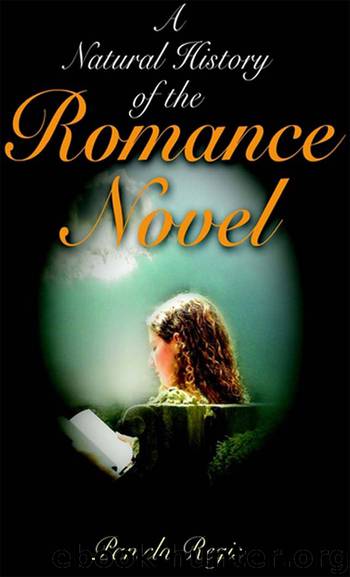A Natural History of the Romance Novel by Pamela Regis

Author:Pamela Regis
Language: eng
Format: epub
ISBN: 9780812203103
Publisher: University of Pennsylvania Press, Inc.
13
CIVIL CONTRACTS
Georgette Heyer
Beginning in 1921, Georgette Heyer (1902–1974) wrote one and sometimes two historical romance novels per year until her death in 1974. A 19§4 survey taken in Great Britain of the public libraries reported that between four and six copies of her novels were borrowed on any given day (Glass 283). Copies in public libraries in America have been borrowed and read until their covers tall off. Perhaps the strongest evidence of her continued popularity is that much of her backlist is still in print. This body of work is her legacy to the history of the romance.
Her influence is felt in every historical romance novel written since 1921, particularly in the Regency romance novel. Heyer is the mother of this kind of romance. The Regency is that period in English history between I SI I and 1820 when the Prince of Wales ruled England as regent for his father, the incapacitated George III. A regent rules during a king or queen’s inability to fulfill his or her duties. The Regency period ended in I 820 because the old king died and the prince became King George IV Regencies are among the most popular historical romance novels and are set in this time period. Each novel includes the core elements explained in Part II: the courtship and betrothal of one or more heroines and heroes (in Heyer’s case, usually one) as well as a meeting, barrier, the attraction between heroine and hero, a declaration, point of ritual death, and recognition. The society defined is specifically Regency society.
Heyer’s main influence was Jane Austen, who lived and published during the Regency period (Pride and Prejudice, for instance, in 1813), but who did not write Regencies. Austen set her romances in her own time, contemporaneous with her own life, and thus wrote contemporaries. Heyer set her novels more than a century before her time and thus wrote historicals. As a number of critics have noted, Heyer borrowed plot elements from Austen’s novels (Bywaters 493). She emulated (as much as any writer could) the wit of Austen’s outlook and language. She could not, however, glean many period details from Austen. Because Austen’s works were contemporary romances, she did not need to include such details in nearly the abundance that they are included in historical novels where authors are writing mindful that the reader may know very little about the period she is reading about. (Anyone who has ever tried to teach an Austen text to students unacquainted with the period can attest to how much must be explained even to those readers eager to read Pride and Prejudice, to say nothing of Mansfield Park.)
Heyer, educated at a seminary school and Westminster College in London, systematically and exhaustively researched the Regency, filling notebooks with the language, dress, geography, politics, war, and personalities of the era (McGrath 317). Heyer’s writing process is now famous—even infamous. To many, meticulous research is synonymous with the well-written Regency romance and the main attraction for readers. Florence Stevenson, writing
Download
This site does not store any files on its server. We only index and link to content provided by other sites. Please contact the content providers to delete copyright contents if any and email us, we'll remove relevant links or contents immediately.
| Ancient & Classical | Arthurian Romance |
| Beat Generation | Feminist |
| Gothic & Romantic | LGBT |
| Medieval | Modern |
| Modernism | Postmodernism |
| Renaissance | Shakespeare |
| Surrealism | Victorian |
4 3 2 1: A Novel by Paul Auster(11101)
The handmaid's tale by Margaret Atwood(6895)
Giovanni's Room by James Baldwin(5936)
Big Magic: Creative Living Beyond Fear by Elizabeth Gilbert(4762)
Asking the Right Questions: A Guide to Critical Thinking by M. Neil Browne & Stuart M. Keeley(4625)
On Writing A Memoir of the Craft by Stephen King(4247)
Ego Is the Enemy by Ryan Holiday(4020)
Ken Follett - World without end by Ken Follett(3992)
The Body: A Guide for Occupants by Bill Bryson(3860)
Bluets by Maggie Nelson(3743)
Adulting by Kelly Williams Brown(3704)
Guilty Pleasures by Laurell K Hamilton(3615)
Eat That Frog! by Brian Tracy(3548)
White Noise - A Novel by Don DeLillo(3453)
The Poetry of Pablo Neruda by Pablo Neruda(3388)
Alive: The Story of the Andes Survivors by Piers Paul Read(3334)
The Book of Joy by Dalai Lama(3258)
The Bookshop by Penelope Fitzgerald(3248)
Fingerprints of the Gods by Graham Hancock(3239)
